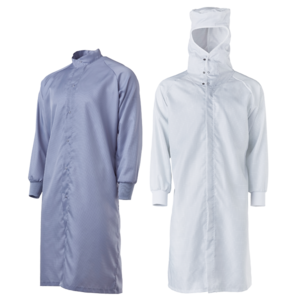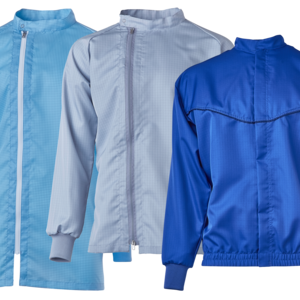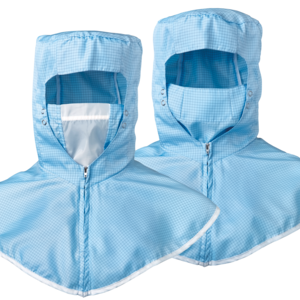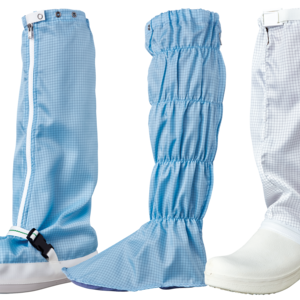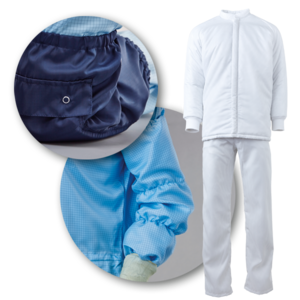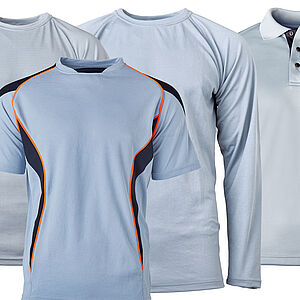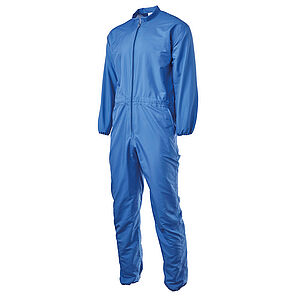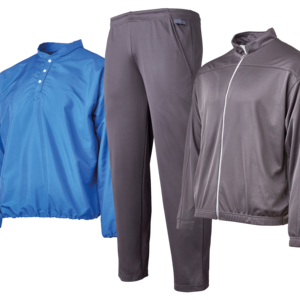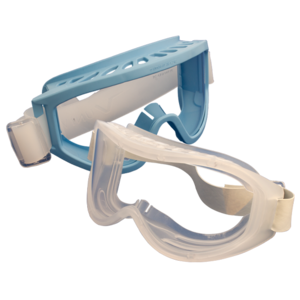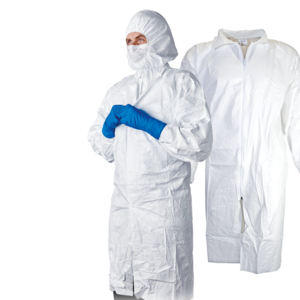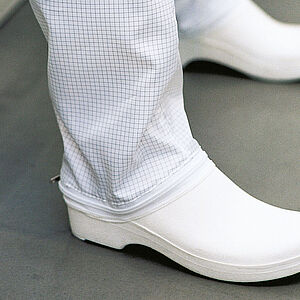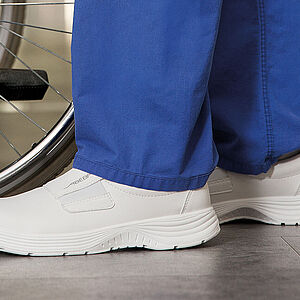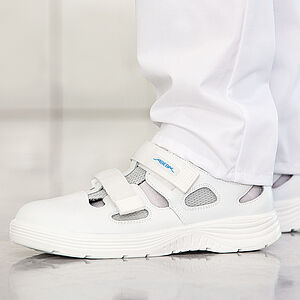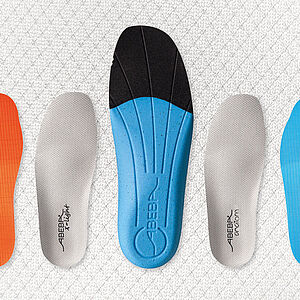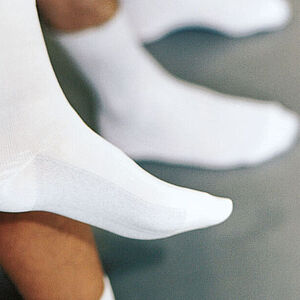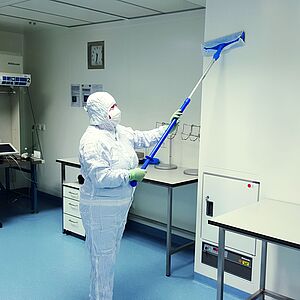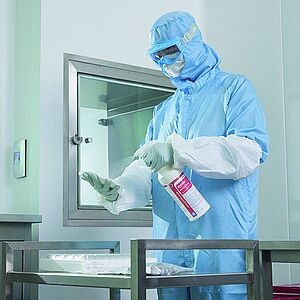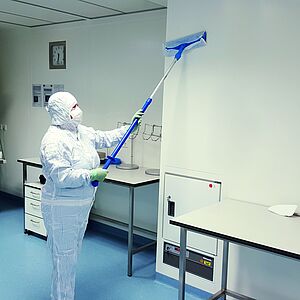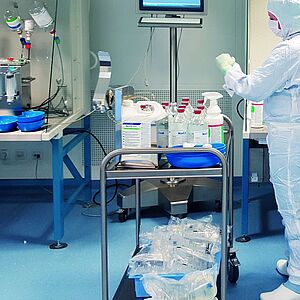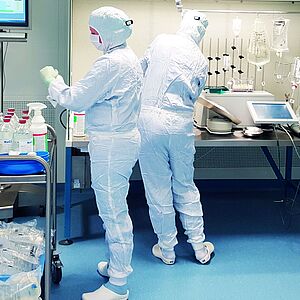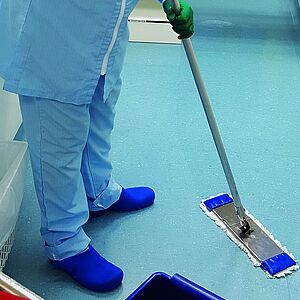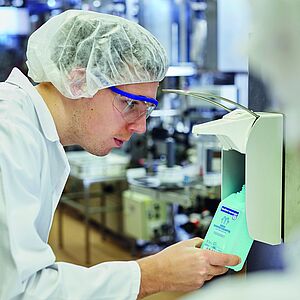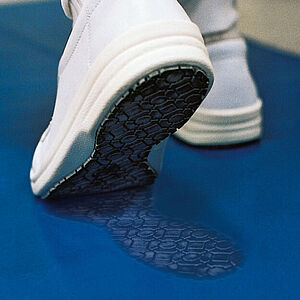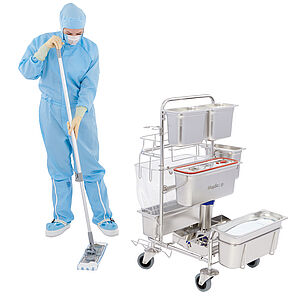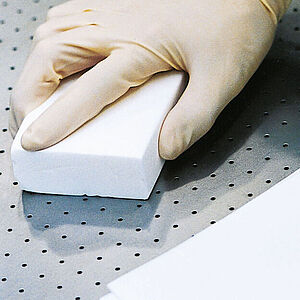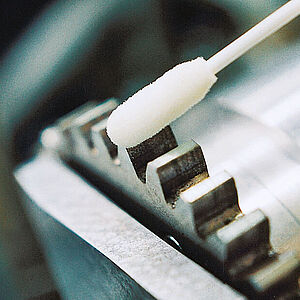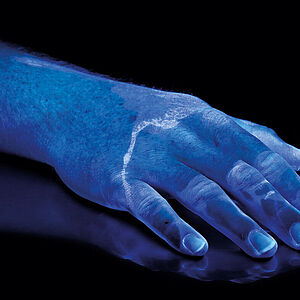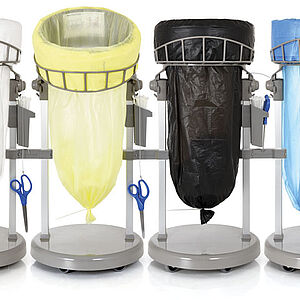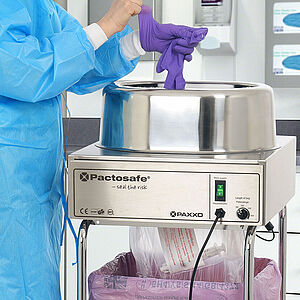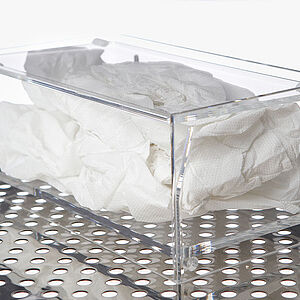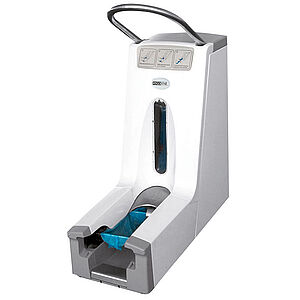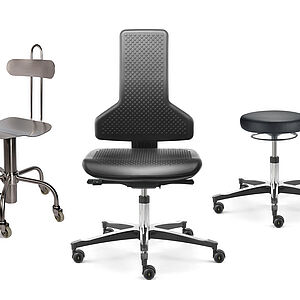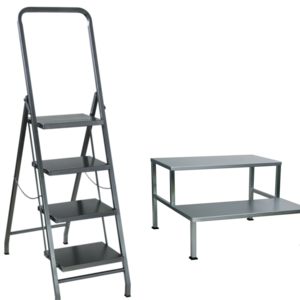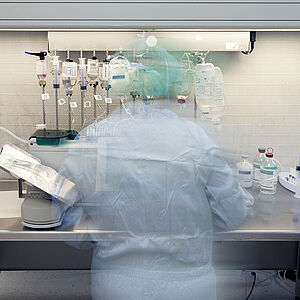The correct choice: garment systems in Technical Cleanliness areas – first Body-Box study with detection of a particle size range ≥ 0.5 µm to > 3,000 µm
The influence of clothing on Technical Cleanliness
Not only in cleanrooms, but also in cleanliness areas, for example in the automotive industry play humans a role as one of the sources of contamination. A correctly selected clothing system, adapted to the process and its specifications, contributes significantly to the avoidance of such contamination, according to the results of a study conducted using a new measurement method.
In cleanroom areas, humans play a major role as a source of contamination [1]. The influence should not be underestimated in the cleanliness areas of the automotive industries either [2]. Personnel can introduce critical, partly function- or safety-relevant contaminations not only for production, but also for the end product. Both in cleanrooms and in cleanliness areas, a correctly selected garment system, which is matched to the process and its specifications, makes a significant contribution to avoiding such contamination. Until now, there has been neither a measurement methodology nor data on this.
Research gap closed
Body-Box studies have been carried out in Dastex's in-house Research and Development department since 2004 [3]. These are carried out for internal questions or in response to customer enquiries. So far, the focus has been on a particle size range of ≥ 0.5 μm to ≥ 10 μm (according to DIN EN ISO 14644) and, in some studies, on the recording of the bacterial count using BioTrak and bacterial counters (according to GMP guidelines). The method now introduced in cooperation with CleanControlling GmbH extends the particle size range upwards to a particle size of ≥ 3,000 μm, thus closing a research gap. The Body-Box measurement method for the area of Technical Cleanliness according to VDA Volume 19 was successfully implemented in a first study. The results clearly show which cleanroom garment systems should be used in the area of Technical Cleanliness.
As the first study with the newly integrated measurement method, a comparative study of different garment concepts was carried out (see table). In addition, for two of the garment systems, a comparison was made between new outerwear and 60 times decontaminated outerwear.
For the lab coat, a cleanroom fabric was deliberately chosen that is recommended for use in air cleanliness classes EN ISO 14644-1 4 and worse, and for the overall, a cleanroom fabric for classes 8 + 9. This is to show how an overall with higher wearing comfort behaves in comparison to a lab coat with higher filtration efficiency. This will show what influence the cut shape can have on cleanliness. The study will also show how cleanroom undergarments, when worn under a lab coat instead of streetwear, can affect the risk of contamination.
Results
The results of the study: Simply wearing a lab coat over streetwear is not sufficient. Although this achieves a reduction of 63% when considering the entire particle size range, the large particles still simply fall out of the bottom of the lab coat. This explains the improvement of just 4 – 17% in the particle size ranges > 100 µm and > 400 µm respectively. If the street garment is replaced by cleanroom undergarments, a significantly higher reduction of up to 99% is achieved. A similarly good reduction in particle counts is achieved when an overall made of ION-NOSTAT LS Light 125.2 is worn over the streetwear. With this very low number of particles, no statement can be made about which of the two garment systems is "better". They both show very good results. Which of the two should be used in the respective production depends on further factors depending on the respective process.
As the clothing system ranking (see figure) illustrates, with 0 - 6 particles/minute (depending on the particle size range), the fewest particles were detected when using a lab coat made of ION-NOSTAT VI.2 in combination with a cleanroom undergarment. This is closely followed by the values of the ION-NOSTAT LS Light 125.2 overall with 5 -48 particles/minute (depending on the particle size range). At the same time, the textile offers a very high wearing comfort. As expected, the streetwear emits the most particles with 59 and 198 particles/minute respectively. It should be mentioned here that this was a freshly washed cotton jogging suit that was only worn in the Body-Box. With normal streetwear, a significantly higher level of particulate contamination is to be expected. Here, street dirt, contamination, for example from pets, and many others are added. All these particles fall out of the bottom of the lab coat, which is why the particle values of the streetwear + lab coat are high at around 32 - 165 particles/minute, despite the high-quality cleanroom textile ION-NOSTAT VI.2. Contaminants that fall down do not automatically sediment on the floor and they certainly do not remain there immobile. Depending on the type of particle, particles remain suspended in the air for a long time. Due to movements, such as walking movements of personnel, airflows, etc., the particles are stirred up with the airflows and can settle on the work areas and thus on the products. The use of a streetwear-plus-lab-coat version is therefore strongly discouraged above a certain required level of cleanliness.
Conclusion and outlook
The present results from the first study clearly show which clothing systems should be chosen for which areas. It also shows the influence of the textile and the influence of the cut shape on cleanliness. Depending on how the individual requirements were specified, different clothing systems can contain the source of human contamination in the cleanroom and clean area.
The introduced measurement method closes the previous gap and thus enables the practical determination of particle values with a size ≥ 3000 µm. The measurement method used not only results in a quantitative evaluation, but can also be broken down into the individual particle types if required and appropriate. If a user decides to conduct a study with garments already worn in production, conclusions could be drawn about the removal of metallic particles through decontamination. It is quite conceivable that metallic particles adhere to the fibres and are only removed by the movements of the employee. A corresponding study could, for example, be used to define maximum wearing cycles or, if necessary, to optimise the garment system in the more stressed areas.
References
[1] Moschner, C. (2010). Kontaminationsquelle Mensch – Partikelemissionen durch den Menschen. ReinRaumTechnik, 01, 30-33
[2] Verband der Automobilindustrie e. V. (2010). Qualitätsmanagement in der Automobilindustrie – Band 19 Teil 2 Technische Sauberkeit in der Montage
[3] Moschner, C. & von Kahlden, T. (2004). Body-Box-Test: Eine Testmethode auf dem Prüfstand. ReinRaumTechnik, 02, 38-39
Alina Kopp, Carsten Moschner, Volker Burger
The authors would like to thank Jonas Jost for carrying out the measurements as part of his Bachelor's thesis at the Albstadt-Sigmaringen University, Faculty of Life Sciences (Germany).






